News broke last weekend about a leak on the Russian Progress MS-21 spacecraft near the International Space Station (ISS). This marks the second instance of depressurization on the station in the past two months. In this article, “Hitek” provides an update on the incident and addresses any potential risks to the crew.
Discover “Haytek” in
On February 11, experts at the Mission Control Center in Moscow identified a depressurization issue on the Progress MS-21 spacecraft, which was docked to the Search module of the International Space Station (ISS). According to “Roscosmos,” the cause of the problem was a coolant leak from the ship’s cooling system.
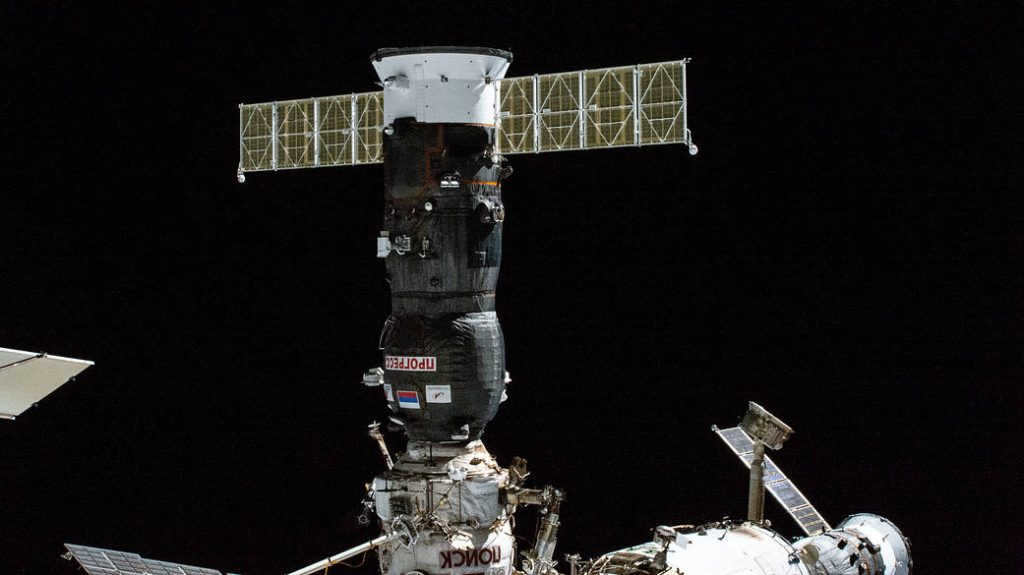
The vessels in this series are designed to be used only once: once they have delivered their cargo to the International Space Station (ISS), they are filled with waste that needs to be disposed of. The loaded Progress spacecraft is then sent out of orbit and burned up in the Earth’s atmosphere. The trajectory is carefully chosen to ensure that any remaining debris lands in non-navigable areas of the southern Pacific Ocean.
According to Roscosmos, the cargo from the Progress MS-21 spacecraft was transferred back in early January. In the first few days of February, the crew was occupied with filling the module with debris and preparing for undocking, which was originally scheduled for February 18. It is currently uncertain if the planned date will be changed as a result of the investigation into the incident.
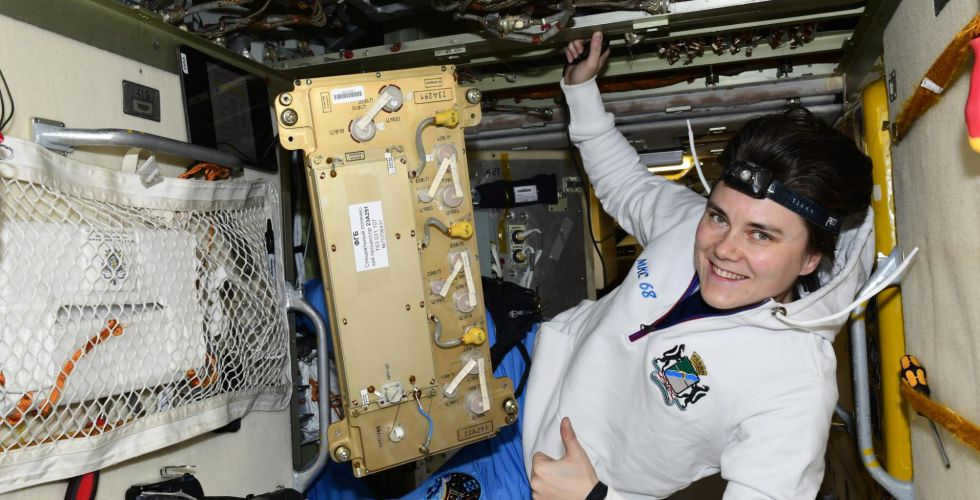
The cause of the Progress incident
Roscosmos analysis has confirmed that the loss of pressure in the cargo ship was a result of a leak in the cooling system. This issue was also observed in the Soyuz MS-22 spacecraft, where experts concluded that the damage to the outer structure was likely caused by a meteorite impact.

Initially, representatives from Roscosmos speculated that the cause of the recent leak was also an external impact that resulted in a breach in the cargo ship’s hull. In order to verify this theory, on February 14th, Progress MS-21 underwent an examination using a remote manipulator located on the American segment of the ISS. Images and videos were captured during the inspection, showcasing the outer surface of the vessel. These materials were then sent back to Earth for analysis by experts. The findings of this analysis are currently unknown.
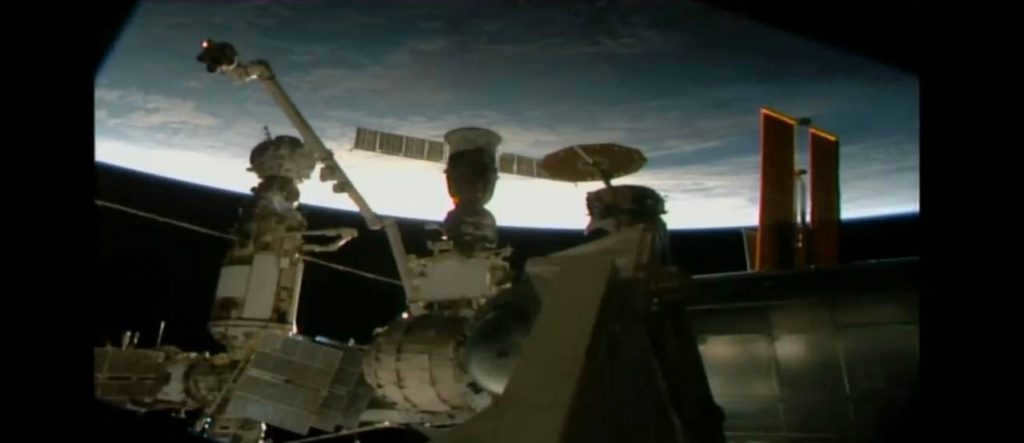
Is there a danger to the crew of the International Space Station?
Both “Roscosmos” and NASA are confident that the depressurization of the cargo ship did not impact the station’s operations and did not pose any danger to the crew’s lives. During the incident, the transition hatch connecting the ship and the rest of the station was closed. The spacecraft had already been prepared for undocking and all the necessary cargo was on board.
Additional supplies for the crew’s work, including water and food, were successfully delivered by the subsequent Progress MS-22 cargo ship. It departed Baikonur on Thursday, February 9, and successfully docked with the Zvezda module on Saturday, the same day as the accident. Thus, the crew will not face any shortage of supplies.
However, due to the similarities between the incidents that occurred in December and the current situation, Roscosmos has arranged for an investigation to determine the cause of the event. In contrast to the Progress MS-21 cargo spacecraft, which is expected to disintegrate in the Earth’s atmosphere, the manned Soyuz MS-22 was intended to transport the ISS crew back to our planet. The incident that took place in December involving that module resulted in a modification of the station’s operational schedule.
What is the plan for the return of the cosmonauts and astronauts back to Earth?
Currently, there are a total of 7 individuals present on the International Space Station (ISS). This includes the three main mission members as well as four crew members who were recently delivered through SpaceX’s Crew-5 mission as a part of their commercial program. The team consists of Russian cosmonauts Sergey Prokopyev, Dmitry Petelin, and NASA astronaut Francisco Rubio, who arrived at the station using the Soyuz MS-22 spacecraft. Additionally, U.S. astronauts Nicole Mann and Josh Cassada, along with Japanese astronaut Koichi Wakata and Russian cosmonaut Anna Kikina, traveled to the station using a U.S. spacecraft.
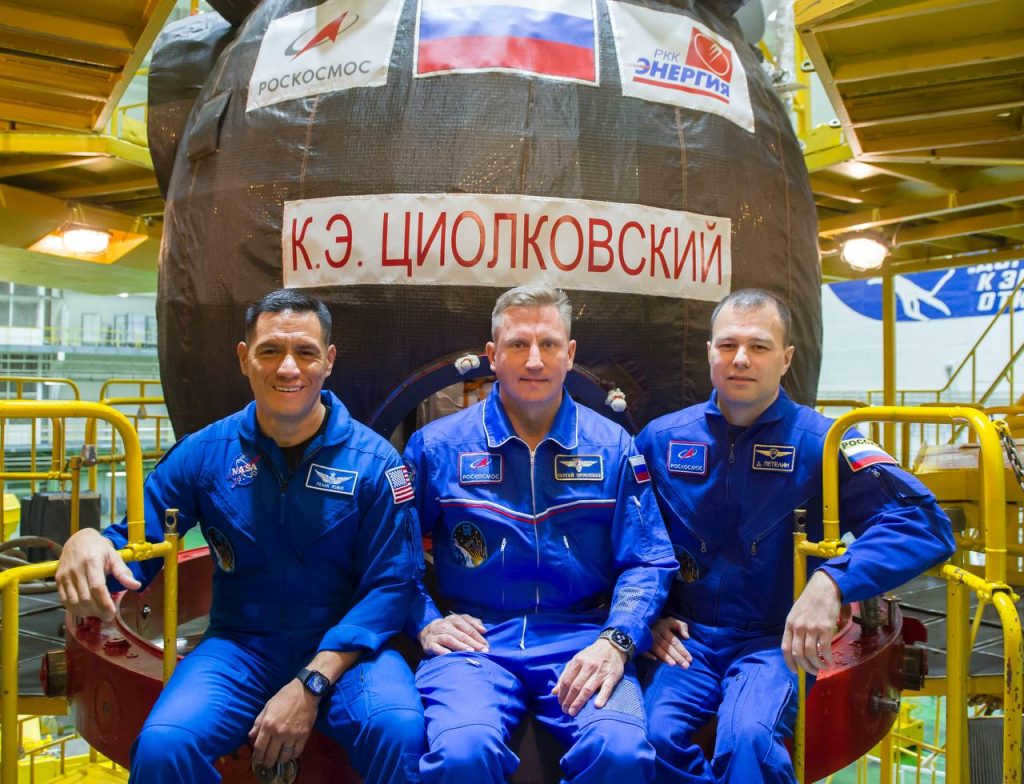
Following an investigation into the December incident, NASA and Roscosmos have reached an agreement to temporarily modify the emergency crew rescue program. The plan is to expedite the process and launch a new manned spacecraft, Soyuz MS-23, to the International Space Station (ISS) as early as February 20th, but without a crew on board. This spacecraft will be responsible for returning three members of the main mission staff back to Earth.
In the event of an emergency prior to the arrival of the new Soyuz, the contingency plan entails Francisco Rubio descending to Earth on the Crew-5 spacecraft, along with four other members of the mission who arrived at the station via the SpaceX spacecraft.
The Soyuz MS-23 launch has been postponed indefinitely due to new circumstances. The head of Roscosmos, Yuri Borisov, has announced that the flight will be delayed until March 2023, pending the completion of the investigation into the accident. As a result, the astronauts who arrived on the Soyuz MS-22 will have to remain at the station, and the emergency evacuation plan will remain in effect.
Yuri Borisov, the head of Roscosmos, has provided comments on the incident and the delay of the launch. Watch the video from “Roscosmos” for more information.
Learn more:
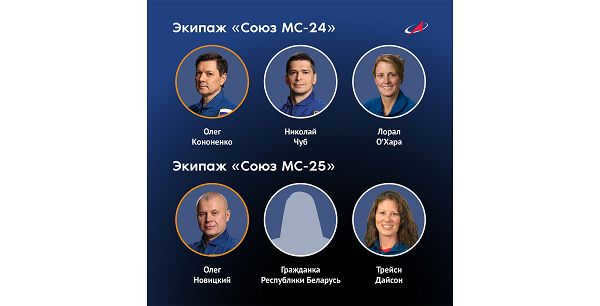
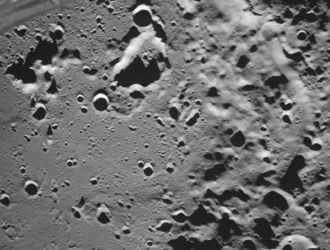
On 08/17/2023, there was some interesting news.
AMS “Luna-25” completed a thorough examination of the lunar surface
Roscosmos has reported that the AMS “Luna-25” successfully conducted a comprehensive survey of the lunar surface using the STS-L complex’s television cameras.
The Progress MS-24 cargo ship was dispatched to Baikonur for assembly with the Soyuz-2.1a launch vehicle
At Baikonur Cosmodrome, the final preparations are being made for the launch of the Progress MS-24 cargo ship to the ISS. This event took place today.
An emergency rescue system has been transported to Baikonur in order to provide support for the launch of the Soyuz MS-24 spacecraft.
The propulsion system of the emergency rescue system was delivered to the Krainy airport at Baikonur Cosmodrome by an An-12 aircraft.
The Starlink 6.10 satellite group has been successfully launched.
The launch took place on August 17, 2023, at 03:36 UTC (06:36 Moscow time) from pad SLC-40 at Cape Canaveral Space Center in Florida, USA.
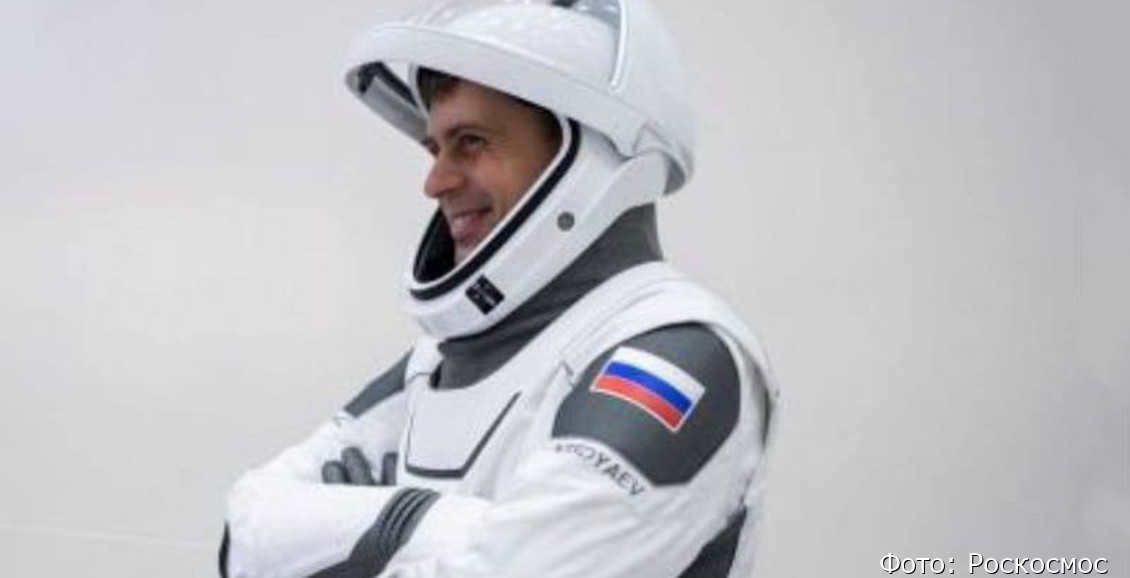
Latest updates on this subject
- November 23, 2022 Rear Admiral’s personal collection now on display at Vilyuchinsky local history museum
- May 23, 2022 Collaboration between Take Care of Kamchatka brand and Roscosmos results in new clothing line
- January 27, 2022 Cosmonaut captures stunning images of Kamchatka from space
- August 19, 2021 "Kamchatka’s rapid development: new hotels with swimming pools are popping up"
- January 13, 2021 Winter view of Petropavlovsk captured from the International Space Station
It’s a strange political game going on. Sanctions have been imposed and relations with the US have been completely broken. Both sides are building up their arms and even venturing into space together.
Attention! In order to comment on materials, you must log in to the site. Sign up
WHAT BLOGGERS ARE WRITING
 Roman Pridachin is wondering where Autopark is heading.
Roman Pridachin is wondering where Autopark is heading. Alexei Zhuchkov talks about being a puppet theater director, corruption, the best artists, and his dismissal.
Alexei Zhuchkov talks about being a puppet theater director, corruption, the best artists, and his dismissal. Anastasia Minchenko writes about finding those who went to war and never returned.
Anastasia Minchenko writes about finding those who went to war and never returned.
What people are saying
- Oprdo: Kamchatka has turned into a dumping ground for all sorts of unwanted waste. The duration of this situation remains uncertain!
- 005: The festival and folk celebrations are great. There is just one tiny question (a mere trifle). “Save salmon together” – for whom?
- Vasya Pupkin: And in the Aleutian District, this installation continues to rust successfully, much to the dismay of the prosecutor’s office.
- Oprdo: Well, this poor woman doesn’t have the money for a trip to Crimea or the Caucasus. She just wants to give her child some sunshine and a little sunburn. But now, they want to take away her motherhood and send her child to an orphanage. The prosecutor’s office should be standing up for the rights of mothers and children!
- Oprdo: What should be done with the water from the melted snow? If the snow is not removed, it will not melt and the water will have nowhere to go. It’s foolish! Let’s say they build a bund and a water-permeable coating, but then what? Will there be a new lake in Yelizovo? It will be dirty and smelly.
- That’s our reality: Those responsible should be ashamed of themselves in front of the public.
© Network edition “Information Agency “Kam 24”, 2012-2023.
Media registration certificate EL № FS 77-52675 from 01.02.2013,
issued by the Federal Service for Supervision of Communications, Information Technologies and Mass Media.
*Instagram is a social network recognized as extremist in Russia
Founder: Novosti LLC. Editorial office address: 683032, Kamchatka Territory,
Editor-in-Chief: Vladimir Khitrov.
Contact the editorial office by phone at (4152) 290-290 or 290-288. You can also reach them via email at [email protected].
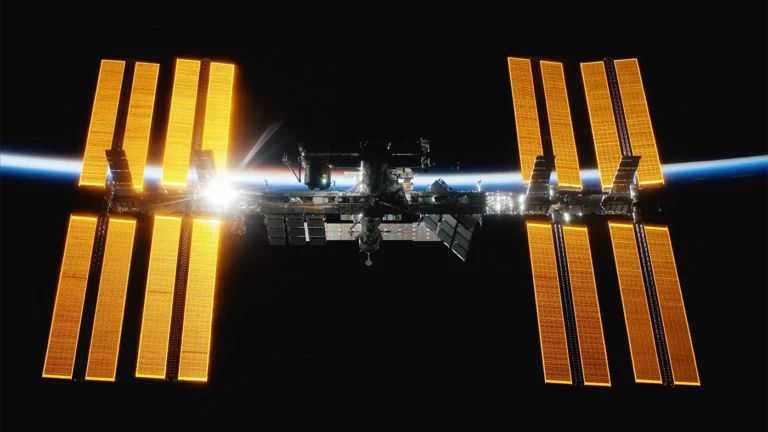

Oleg Kononenko, a cosmonaut, will be part of the upcoming mission to the International Space Station (ISS), according to an agreement recently reached. The mission, known as Crew-5, is set to launch on October 3 and will feature the Crew Dragon spacecraft. Joining Kononenko on the mission will be NASA astronauts Nicole Mann and Josh Cassada, as well as JAXA astronaut Koichi Wakata.
Overview of the History of Russian-American Joint Space Missions
Since the early 1990s, there has been a rich history of collaborative space missions between Russia and the United States. The first significant joint mission occurred in 1994, when Russian cosmonaut Sergei Krikalev embarked on a historic journey aboard the U.S. space shuttle Discovery. This groundbreaking mission marked the beginning of a new era of international cooperation in space exploration.
In 1995, the collaboration continued to flourish as American astronaut Norman Thagard became the first U.S. representative to visit the Russian Mir space station. Thagard’s voyage onboard a Russian spacecraft demonstrated the growing partnership between the two nations in the pursuit of scientific discovery and technological advancement.
One of the key aspects of this collaborative effort is the cross-flight scheme, which involves Russian cosmonauts joining American spacecraft crews and vice versa. This arrangement was particularly prevalent during the early years of the International Space Station (ISS) operation, when American astronauts utilized their reusable spacecraft to travel to the station.
However, following the tragedy of the Columbia shuttle, there were changes made, and from 2011 to 2020, manned missions to the space station were solely conducted on Russian Soyuz spacecraft, with NASA paying Roscosmos to transport astronauts on Russian vessels. This arrangement remained in place until the introduction of the private spacecraft Crew Dragon, developed by SpaceX, in the United States. After its successful inaugural manned mission in late 2020, there was only one joint mission in early 2021. Subsequently, Russian Soyuz spacecraft were exclusively used for Russian crew members, with one exception when Japanese space tourists were onboard.
In the 2000s, during the early stages of the ISS program, Russian astronauts were trained to have full control of the American segment, while American astronauts were trained to have full control of the Russian segment. In addition, they were also trained to conduct spacewalks using their partners’ spacesuits.
Why cross-flight missions are essential
Currently, there has been a significant reduction in cosmonaut training, where both Russians and Americans are only receiving basic familiarization with their counterparts’ segments for safety reasons. However, the complexity of these segments restricts “outsider” crew members from providing support to the partners’ science program and managing their segments. As a result, the two space agencies have reintroduced cross-flight missions to address potential emergency situations such as launch delays of Russian or U.S. spacecraft. These missions ensure that at least one Roscosmos cosmonaut and one NASA astronaut are present at the international station to maintain their respective station segments.

“Due to the condensed training for the partners’ segment, there is a potential for a situation similar to the 2018 incident when the Russian Soyuz spacecraft failed to reach the station,” said Alexander Khokhlov, a member of the Northwest organization of the Russian Federation of Cosmonautics of Russia, in an interview with RTVI. “Just last year, the launch of the Crew Dragon spacecraft was delayed due to weather conditions, resulting in another Crew Dragon having to depart before the new one could fly. If not for the inclusion of American astronaut Mark VandeHei on the Soyuz spacecraft, the U.S. segment would have been left without a complete crew.”
“If this were to happen, the Russians would face several challenges. Firstly, they would struggle to maintain all the scientific experiments on the American segment due to a lack of resources. Additionally, they would be unable to guarantee the safety of the segment in case of emergencies, such as the need for repairs or spacewalks,” Khokhlov explained.
Unforeseen launch delays can potentially happen with Russian spacecraft too, just like in 2010 when a Soyuz spacecraft got damaged while being transported by rail. “Hence, if only Americans fly on the U.S. spacecraft and Russians fly on the Russian spacecraft, then in case someone else’s spacecraft fails to launch for any reason, their team might be left without crew members, as the return spacecraft cannot stay on the station indefinitely due to deadlines imposed on both Soyuz and Crew Dragon,” Khokhlov explained.





